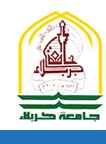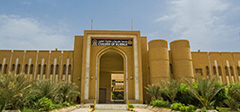Abstract
The viral disease affects the whiteleg shrimp (Litopenaeus vannamei) and causes losses. Immunostimulants are recognized as a more environmentally friendly approach to disease management and antimicrobial properties of aquatic organisms. Watercress (Nasturtium officinale) is an aquatic plant species that contains antioxidant properties that can protect the organism from disease and boost the immune system. Shrimp rely heavily on innate immunity to combat infectious agents due to their absence of adaptive immunity. Peroxinectin and scavenger receptor class B (SRB) play essential roles in the shrimp defense system. This research employs a bioinformatic to assess the immunostimulatory potential of watercress by targeting peroxinectin and SRB in L. vannamei. Based on LC-HRMS analysis, the best value >90% M/Z of watercress was identified in 7 compounds. Protein homology modeling showed a large number of amino acid residues in the favored region, peroxinectin at 95.12% and SRB at 99.40%. Rutin, one of the 7 identified compounds, has the lowest value of binding affinity, peroxinectin at -9.8 (kcal/mol) and SRB at -7.1 (kcal/mol). Rutin interaction with receptor proteins forms the most hydrogen bonds among other compounds. The RMSF value of both receptor proteins remained below 2.5Å, implying the sustained stability and cohesion of the ligand targets throughout the simulation. The bioactive compound of watercress N. officinale, especially rutin, has shown stable binding to peroxinectin and SRB. This indicates that the compound is potentially an immunostimulant to activate receptor protein, peroxinectin, and scavenger receptor class B and combat viral infection
Recommended Citation
A’yunin, Qurrota; Rifa’i, Muhaimin; Maftuch, Maftuch; Jatmiko, Yoga Dwi; Widyananda, Muhammad Hermawan; Triyanto, Triyanto; and Handrianto, Muhammad Tegar
(2025)
"Immuno-Bioinformatics Study of Secondary Metabolites from Watercress Nasturtium officinale as Immunostimulant in Whiteleg Shrimp Litopenaeus vannamei by Targeting Peroxinectin and Scavenger Receptor Class B,"
Karbala International Journal of Modern Science: Vol. 11
:
Iss.
1
, Article 13.
Available at:
https://doi.org/10.33640/2405-609X.3395
Creative Commons License

This work is licensed under a Creative Commons Attribution-Noncommercial-No Derivative Works 4.0 License.
Included in
Aquaculture and Fisheries Commons, Bioinformatics Commons, Biotechnology Commons, Chemistry Commons, Immunology of Infectious Disease Commons, Immunotherapy Commons, Pathogenic Microbiology Commons, Pharmacology, Toxicology and Environmental Health Commons, Veterinary Microbiology and Immunobiology Commons, Virology Commons




